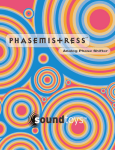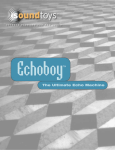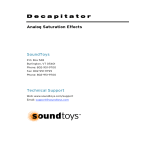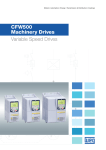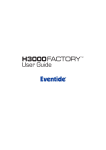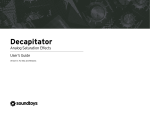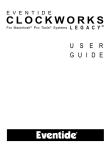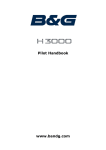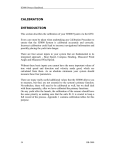Download User Guide - Performance Audio
Transcript
This plug-in brings us right back to our days working at Eventide.* When we were asked to create a stereo harmonizer, we went a little crazy, and created the H3000 multi-effects processor, with dozens of effects algorithms and hundreds of presets. Even a couple of decades or so later, it’s still a great trick, and is a big reason why those old pitch shifters are still in demand. As cool as all that was, the thing is, almost every time we walked up to a rack with an H3000 in it, it was almost always set up for tiny pitch shifts (hence the name, microshift) to thicken background vocals or other instruments. Dial in a few cents up on the left, and a few down on the right, add a dash of delay, and voila, instant fat stereo sound! MicroShift expands upon its little brother (Little MicroShift) by allowing you to dial in the exact amount of DETUNE and DELAY, and adds a unique multi-band FOCUS control so you can apply the effect only to higher frequencies, leaving your low end tight and untouched. INSTALLATION: If you're reading this manual, you've probably already installed MicroShift successfully. If not, please read our SoundToys Getting Started Guide. * Note: Eventide, Harmonizer and H3000 are all trademarks of Eventide Inc. AMS is a trademark of AMS Neve Ltd. These are mentioned for historical purposes only. AMS and Eventide in no way endorse this product, and are not associated or affiliated with SoundToys. CONTROLS: MIX: For the clearest, widest sound, 100 percent wet is the way to go. To get a thicker more ‘chorused’ sound, you can use this control to blend some of the original unprocessed signal with the pitch shifted and delayed effect. FOCUS: The FOCUS knob controls the crossover point of a 2-band crossover flter, applying the effected signal only to the high band. While very source dependent, it's useful for widening mid and high frequency content without making the low end sound loose or “muddy”. It defaults to 20 Hz, but can go all the way up to 10 kHz. DETUNE: DETUNE increases or decreases the amount of micro pitch-shifting that is happening with any particular style. Because the pitch shifting for each style is continually time varying, this control is in units of percent. At 50%, the amount of detuning is halved. At 200%, the amount of detuning is doubled. STYLE I: Modeled on preset #231 from the H3000. We’ve pretty closely matched the delay and pitch variation (which isn’t exactly what the front panel says), and even emulated the sound of the analog saturation. DELAY: DELAY increases or decreases the amount of delay that is happening with any particular style. Because the delay for each style is continually time varying, this control is in units of percent. At 50%, the amount of delay is halved. At 200%, the amount of delay is doubled. STYLE II: Modeled on preset #519 from the H3000, which was based on a different pitch shifting algorithm, and has a slightly different sound due to different amounts of delay variation and a different frequency response. STYLE III: Modeled on a favorite setting from the AMS* DMX 15-80. This style has much wider delay variation, different saturation characteristics, and a different, harder, ‘de-glitching’ circuit.


